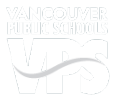Lately I’ve been thinking about storytelling. Not just the stories in these podcasts, but the stories that are told all over the district. Since 2008, we’ve worked together to shape the narrative of our strategic plan, Design II, which describes all the great things that happen in Vancouver Public Schools. Many stories have surfaced from the six goal areas: instructional quality, early learning, programs of choice, flexible learning environments, family engagement, and safe and supportive schools. You probably know several of those stories. Like the one about free full-day kindergarten at all 21 elementary schools. Or the one about Professional Learning Communities improving student learning. Maybe you’ve also heard how Positive Behavior Interventions and Supports and Response to Intervention are changing school cultures and producing academic gains. Remarkable stories, all of them.
Now, people outside Vancouver are asking to hear them, too.
The National School Boards Association and more than 100 people toured our schools last May. This fall, we continue to welcome guests from across our state and country.
In September, representatives from the U.S. Department of Education and the Office of the Superintendent of Public Instruction dropped in at Sacajawea Elementary on a tour of the West Coast. They were treated to a live broadcast of “Skyhawk News” and witnessed the recycling, energy-efficiency, and well-being programs that have led to several green awards. With more than 60 students participating in the school’s Green Team, Sacajawea is evidence of authentic student engagement in action.
Earlier this month, the Washington State House Education Committee stopped by Vancouver iTech Preparatory to witness project-based learning. At Roosevelt Elementary, they learned about Family-Community Resource Centers and the Opportunity Zone, and they heard from some of our community partners. We’ve come a long way in programs of choice and family engagement since Design II was implemented: iTech Prep didn’t even exist prior to 2012. And partnerships related to Family-Community Resource Centers, which contribute $3.5 million per year to support students and families, have grown from 22 to more than 650.
In November, representatives from Lincoln Public Schools in Lincoln, Nebraska, will meet with district staff to hear about how we envisioned, planned, and created capacity for flexible learning environments. Then they’ll tour Alki Middle School to see the plan in action. Consider how far this goal area has come: Five years ago, most of us had never even heard of an iPad. Now, these and other devices are being deployed to our students. Other innovative districts have informed our work in this goal area. Now we have the opportunity to assist others as we share the progress we’re making toward our own digital transformation.
The fact that so many people want to come to Vancouver and hear these stories speaks to the value of your work. That their interest spans many Design II goal areas speaks to the quality and comprehensiveness of our strategic planning process.
For all of us in Vancouver Public Schools, these visits are a reminder of the strength of our commitment to excellence. And when others repeat our stories, we’re making valuable contributions to the national conversation about education.
On the first day of school, I got the chance to hear some great Design II stories myself. Along with Board President Dale Rice and Vancouver Education Association President Courtney Eyer, I visited Roosevelt, Minnehaha, Marshall, Alki, and iTech Prep. We saw everything from early learning and instructional quality to programs of choice and flexible learning environments. And a photographer and videographer contracted by Education Week magazine came with us to document the activities for a feature on the use of technology in schools.
With Education Week’s print readership topping 80,000 and more than 600,000 registered users of its website, that’s a lot more people who now know about our success stories.
My thanks to the staff and students at all the schools for being such gracious hosts and expert narrators.
Let’s never stop telling stories. And as we reach the end of the first chapter of Design II and begin a new one, let’s never stop seeking them, either. Take a look around the district. The tales are there. All you have to do is listen.
Take care,

